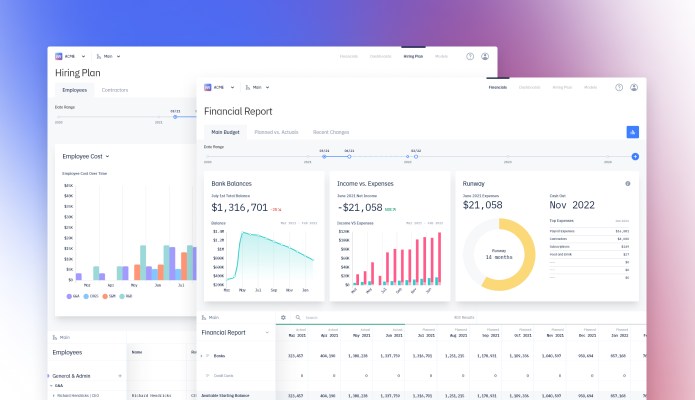What is ambient computing?
Ambient computing refers to the smart devices all around us, and how they can make life easier without human intervention. Here's what everyone should know.

We’re now in the decade of ambient computing — and if you didn’t notice, that’s part of the plan. Ambient computing is all about A.I. decisions made without human involvement, and it has big implications for the world of technology. Here’s everything you need to know about this exciting new field of computing.
Ambient computing history and definition
 Pixaline/Pixabay
Pixaline/PixabayAmbient computing is a broad term that describes an environment of smart devices, data, A.I. decisions, and human activity that enables computer actions alongside everyday life, without the need for direct human commands or intervention. Essentially, computers quietly take care of stuff in the background. The phrase was coined in the 1990s but first became prominent in the mid-2010s. Even then, it wasn’t until around 2018 that it turned into a buzzword regularly used by Google, HP, and organizations throughout Silicon Valley. In 2020, thought leaders assumed it would, at last, be the big year of ambient computing.
Things weren’t that simple, but ambient computing is certainly having a moment, as both a growing factor in many strategic business decisions and an impetus for smart home branding. The harder you look, the more you can see signs of ambient computing just about everywhere.
Ever since humans have been able to imagine the Enterprise’s often-omniscient computer or Asimov’s Multivac, we’ve understood what ambient computing could be. Describing it is a little more difficult, but it’s easier to think about its development in several stages:
The Internet of Things (IoT): The Internet of Things is an ecosystem of smart devices equipped with sensors and gathering environmental data — lots and lots of data. These devices have a limited ability to communicate with each other and central hubs, and they can send data into the cloud for further processing. Machine learning: A.I. software is developed to analyze data, like that gathered in the Internet of Things, and draw conclusions. Machine learning systems based on human cognition are taught how to recognize good or bad data sets in increasingly complex ways. Over time, A.I. can become very accurate, allowing it to make important decisions, like “These pixels look like a human face.” Conditional rules: The combination of the Internet of Things and machine learning allows smart devices to act in certain ways given the right conditions. This can be very simple, like switching on the coffeemaker automatically in the morning. Or, using our human face example, automatically alerting a homeowner when a security cam detects a face. Seamless integration: Many smart devices still require human interaction, whether it’s confirming an alert on your smartphone or asking Google Assistant about morning traffic. True ambient computing only occurs when the integration becomes seamless. For example, new Ring video doorbells equipped with the Alexa voice assistant can now detect a human presence or respond to a doorbell ringing, ask why the visitor is there, and give instructions on what to do with a package, all without the owner needing to be involved.Ambient computing examples
 Tesla Inc
Tesla IncAmbient computing has many different applications in a variety of industries, with more on the way. Here are a few ways we’re currently seeing it being used:
Chatbots on social media or websites can imitate customer representatives in real time, show products, and complete sales without any employee interaction needed. Advanced microphone software can detect conference room devices to automatically connect audio and video to everyone’s personal devices. Sensors in industrial equipment can monitor wear and tear, fuel, and other factors, then automatically schedule maintenance based on the data. Electrical grids can automatically sense fluctuations in demand or supply across the grid and shift resources to balance out energy deployment. Newer trains and freight cars can monitor weight, delivery time windows, and warehouse activity to automatically adjust speeds so shipments arrive on time while saving fuel. And, of course, self-driving cars that — within parameters — can drive their passengers to a destination, respond to traffic, and avoid danger without intervention.Ambient computing at home

You may already be benefiting from ambient computing in your home with the devices you use every day. For example, the popular Nest Smart Thermostat and its contemporaries can detect when people are active in the house by using near- and far-range motion sensors, then automatically update their warming and cooling schedules to match when people are moving around.
Or take AirPods — newer versions of Apple’s wireless earphones use spatial audio and dynamic head tracking to adjust sound based on the user’s position without the need to manually change any settings.
Then there is medical alert technology in smartwatches like the Apple Watch, which can monitor vital signs or use sensors to detect potential falls for the elderly, and make a call to a loved one or emergency number if it looks like something is wrong.
Ambient computing and privacy
 John Velasco / Digital Trends
John Velasco / Digital TrendsSmart devices already make a number of people uneasy about the data they collect and send to their companies. Ambient computing increases that concern to a new level, since there is even less human interaction and oversight.
One solution is to only allow ambient computing when a user specifically agrees to it, and include a variety of privacy measures like camera shutters, mic switches, and cloud data disposal. This can greatly limit ambient computing, but the decision is always up to the user. So far, it’s been a popular approach for Amazon’s Alexa-enabled Echos and similar smart speakers or displays.
Another solution is improving the processing power and storage of our surrounding smart devices so that they can communicate with each other and make decisions without the need to send any data to the cloud for storage, keeping it local. The problem with this approach is that technology isn’t quite there yet, and even if it was, most brands want that information collected in the cloud so they can analyze it.
Ultimately, privacy issues with ambient computing haven’t been resolved yet, and the coming decade will likely see this become a key issue for more widespread adoption.
The future of ambient computing
Smart devices have only begun to learn how to talk with each other effectively and bridge brand software divides. In the coming years, new smart communication protocols will make universal compatibility easier to achieve, opening the industry for new ambient computing experiences.
It’s difficult to predict exactly what that will look like. However, in the near future, things will probably get quieter: With systems anticipating our demands, there will be less need for voice commands, so fewer “Hey Siri” and “Alexa” phrases will be used. Things will also get faster: Without the need for a human to authorize every step, devices will be able to take action more quickly and complete tasks with greater efficiency, too.

 Aliver
Aliver 





























